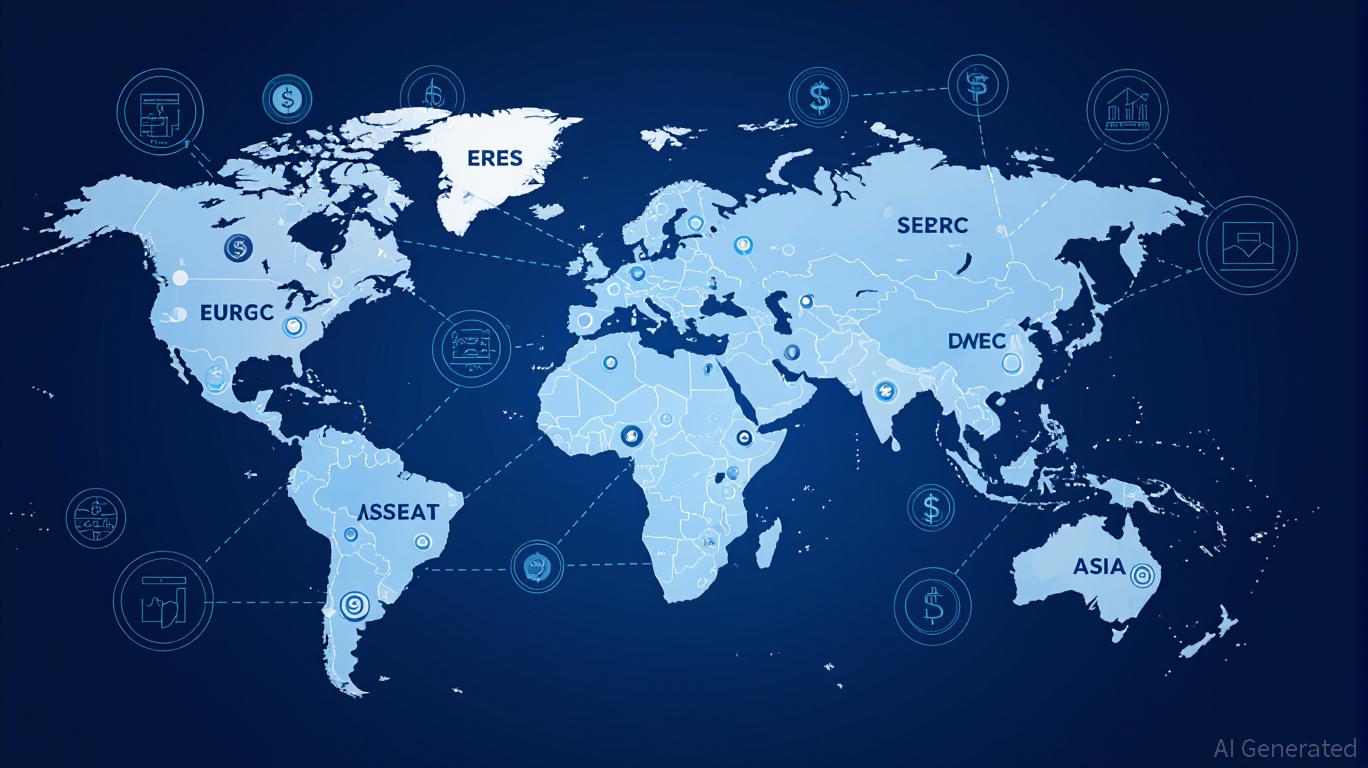Fed Policy Divergence: Navigating the Tension Between Powell's Dovish Signals and Williams' Hawkish Caution
- Fed's 2025 policy split: Powell's dovish pivot vs. Williams' hawkish caution over inflation/employment balance. - Market volatility spikes as conflicting signals drive S&P 500 gains and inflation-hedging asset inflows. - Investors adopt diversified portfolios with value stocks, TIPS, and options strategies to hedge uncertainty. - Geopolitical rebalancing reduces U.S. equity exposure while prioritizing European banks and cash-flow resilient sectors.
The Federal Reserve's internal debate in 2025 has crystallized into a stark divergence between Chair Jerome Powell's dovish pivot and New York Fed President John Williams' hawkish caution. This tension, rooted in differing interpretations of inflation, labor market dynamics, and political pressures, has created a fog of uncertainty for investors. As the Fed grapples with its dual mandate of maximum employment and price stability, the implications for markets and portfolios are profound.
Powell's Dovish Pivot: A Shift in Tone
Powell's recent remarks, particularly his Jackson Hole Economic Symposium speech on August 22, 2025, signaled a clear tilt toward easing. He acknowledged a “shifting balance of risks” and hinted at a September rate cut, citing a softening labor market and inflation stabilizing near 3%. This dovish turn reflects a recalibration of the Fed's policy framework, emphasizing flexibility in addressing cyclical and structural shifts. Powell's approach prioritizes preemptive action to avert unnecessary damage to employment, even as he cautions against overreacting to transitory data.
Williams' Hawkish Caution: A Defense of Discipline
In contrast, Williams has maintained a more traditional stance, stressing the need for patience to ensure inflation remains anchored. His August 1 remarks emphasized that “premature easing risks reigniting inflationary pressures,” particularly as tariffs and structural shifts complicate the disinflationary path. Williams' hawkish caution underscores a preference for data-dependent decisions, prioritizing price stability over preemptive easing. This divergence has raised questions about the Fed's internal consensus, with Williams representing a faction wary of repeating past policy errors.
Market Reactions: Volatility and Strategic Rebalancing
The Fed's internal debate has directly influenced investor behavior. Equity markets initially rallied on Powell's dovish signals, with the S&P 500 surging 8% post-Jackson Hole. However, Williams' hawkish stance has introduced volatility, as investors grapple with conflicting signals. Fixed-income markets have mirrored this tension, with Treasury yields stabilizing but inflation compensation rising—a reflection of lingering inflation risks.
Investors have recalibrated portfolios to hedge against uncertainty. Equity allocations have shifted toward value stocks and defensive sectors, while inflation-hedging assets like gold and Treasury Inflation-Protected Securities (TIPS) have gained traction. The underweight in growth stocks and long-duration bonds reflects a growing preference for resilience over speculation.
Strategic Implications for Investors
- Diversification as a Core Principle: The Fed's policy divergence demands a diversified portfolio. Investors should balance exposure to value stocks (e.g., industrials, regional banks) with inflation-hedging assets like TIPS and commodities.
- Options Strategies for Volatility: Given the uncertainty, options strategies such as straddles or iron condors can capitalize on expected market swings without directional bets.
- Geographic Rebalancing: A reduced overweight in U.S. equities and increased exposure to European markets, particularly banks, offers diversification benefits.
- Cautious Approach to Growth Stocks: With the Fed's credibility under political scrutiny, growth stocks—especially tech—remain vulnerable to rate hikes. Prioritize sectors with strong cash flows and pricing power.
Conclusion: Navigating the Fog of Uncertainty
The Fed's internal debate between Powell and Williams highlights the challenges of balancing inflation control with employment goals in a structurally shifting economy. For investors, the key lies in adaptability—leveraging diversification, hedging against inflation, and maintaining liquidity. As the Fed moves toward a potential September rate cut, the resolution of this policy divergence will shape market trajectories. Until then, prudence and flexibility remain the cornerstones of a resilient portfolio.
Disclaimer: The content of this article solely reflects the author's opinion and does not represent the platform in any capacity. This article is not intended to serve as a reference for making investment decisions.
You may also like
Altcoin Market at Critical Cycle Bottom: Strategic Entry Points for Oversold Assets in 2025
- Altcoin market signals cyclical bottom via extreme oversold OTHERS/ETH ratio, last seen before 1,250% surges in 2017/2021. - Institutional capital shifts to Ethereum-based ecosystems, with $2.22B BTC-to-ETH swaps and 57.3% ETH dominance driving altcoin momentum. - Dovish Fed policy and Ethereum's $223B DeFi TVL create favorable conditions for dollar-cost averaging into undervalued altcoins with strong fundamentals. - Strategic 5-10% altcoin allocations using Altseason Indicator and technical analysis pos

Decentralizing the Odds: How TON and USDC-Powered Platforms Are Reshaping Crypto Football Betting and Yield Generation
- Dexsport leverages TON's speed and USDC stability to create a decentralized, real-time crypto football betting platform with instant settlement. - Users earn yields through liquidity pools (4-6% APY) and DESU staking (up to 17% APY), blending betting with DeFi income streams. - The platform's 300% YoY user growth and $500M+ TVL highlight its disruptive potential in the $1.5T global sports betting market. - Risks include regulatory uncertainty and smart contract vulnerabilities, though Dexsport undergoes

Nvidia’s AI Dominance Amid Geopolitical Headwinds: A Strategic Investment Thesis in the Global AI Arms Race
- NVIDIA reaches $4 trillion valuation in 2025, driven by $46.7B Q2 revenue from AI data center sales. - Blackwell GPU’s 30x faster AI performance and CUDA ecosystem (90% of developers) solidify its AI infrastructure leadership. - Geopolitical risks, including China’s self-reliance push, are mitigated via B30 GPU and U.S./Europe production shifts. - Competitors like AMD and Intel close the gap, but NVIDIA’s Blackwell outperforms in FP4 and versatility for hyperscalers. - R&D-driven innovation, $60B share b

The New Gold Standard: How Stablecoins Are Reshaping Global Payments Infrastructure
- Stablecoins now form global payment infrastructure, enabling faster, cheaper cross-border transactions via partnerships with traditional banks and fintechs. - Circle's USDC integration with Mastercard and Finastra processes $5T daily in 50+ countries, marking first stablecoin settlement in key emerging markets. - U.S. GENIUS Act and EU MiCA framework provide regulatory clarity, driving institutional adoption with 90% of surveyed banks using or testing stablecoins. - Inflation-hit economies like Argentina
